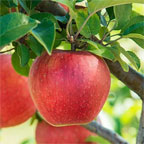- Q.Bee Balm Not Blooming - I live in northern Louisiana and have a beautiful Bee Balm plant, but it hasn't bloomed. Any suggestions?
- Q.Bee Balm - Now that I know the Bee Balm Blob wants to eat my garden, I thought I would take the excess ...
- Q.Potted Bee Balm - I live in Henderson, Nevada. Can you tell me how to take care of bee balm in a pot?
- Q.What Can I Do To Help My Bee Balm Look Better? - This is the third year of my bee balm and it didn't flower much and was real leggy.
- Q.Powdery Mildew And Bee Balm - I have bee balm plants that have powdery mildew. 3 questions: is it caused by wet or dry conditions? Is ...
- Q.Bergamot Plants - My wife received three dry root bergamot plants. What do I do now? Our garden is a row home backyard ...
- Q.Bee Balm? - Last summer I transplanted some of my red bee balm from my front garden to my back hillside. By the ...
Q.Bee Balm Not Blooming
I live in northern Louisiana and have a beautiful Bee Balm plant, but it hasn't bloomed. Any suggestions?
- A.
This article will help: https://www.gardeningknowhow.com/plant-problems/environmental/plant-not-blooming.htm
Your soil could also be low of phosphorus, which most plants require in order to bloom. Here is more information: https://www.gardeningknowhow.com/garden-how-to/soil-fertilizers/phosphorus-plant-growth.htm
Was this answer useful?00
Q.Bee Balm
Now that I know the Bee Balm Blob wants to eat my garden, I thought I would take the excess (that I don't put into a container) into our wooded perimeter. I worked hard to get the buckthorn out. Will putting Bee Balm in its place create a new monster?
- A.
Bee balm is not generally that aggressive but it may help to locate it in a shadier location if it is becoming problematic. This will slow its growth rate some.
Was this answer useful?00 Q.Potted bee balm
I live in Henderson, Nevada. Can you tell me how to take care of bee balm in a pot?
- A.
Its care would be the same as those in the ground with exception to watering. In your region, it can get pretty hot, so with container plants you need to water on a daily basis, even twice a day when temps reach 85 F. or above. Here is info on the care of bee balm: https://www.gardeningknowhow.com/ornamental/flowers/bee-balm/bee-balm-care.htm
Was this answer useful?00 Q.What can I do to help my bee balm look better?
This is the third year of my bee balm and it didn't flower much and was real leggy.
- A.
They likely need more light. Too little light normally results in leggy plants and poor blooming. You can cut them back and either consider moving them to another location or perhaps you can improve the light by pruning any nearby shrubs/trees or other plant growth. Adding bone meal (phosphorus) to the soil may help encourage flowering too.
Was this answer useful?00 Q.powdery mildew and bee balm
I have bee balm plants that have powdery mildew. 3 questions: is it caused by wet or dry conditions? Is a spray of water and milk really an effective preventative? Once it is on the plant, how can I get rid of it (i.e. commercial spray or other recommendation)?
- A.
Powdery mildew loves moist conditions, though even plants that are somewhat dry can be affected. A weekly spray of milk at a concentration of 1 part milk to 9 parts water may significantly reduce the severity of powdery mildew infections. Neem oil is also effective in treating powdery mildew. For more information, these articles will help: https://www.gardeningknowhow.com/plant-problems/disease/get-the-cure-for-powdery-mildew.htm
https://www.gardeningknowhow.com/plant-problems/disease/powdery-mildew-homemade-and-organic-remedies.htmWas this answer useful?00 Q.bergamot plants
My wife received three dry root bergamot plants. What do I do now? Our garden is a row home backyard with a pond, so where is the best place to put them? How do I plant these dry root plants? What is the best time of the year to plant them? Can I plant them now or wait until spring?
- A.
I would go ahead and prepare the planting area and plant the bare roots now.
The link below has growing information.Make sure you leave enough room for the growth of your Bee Balm plants, as they most varieties grow from 2 1/2 to 4 feet tall.
Daily water is very important for the first 2 weeks, then you can cut back. Mulching around the plants will help with moisture retention.
https://www.gardeningknowhow.com/ornamental/flowers/bee-balm/bee-balm-care.htm
Was this answer useful?00 Q.Bee Balm?
Last summer I transplanted some of my red bee balm from my front garden to my back hillside. By the end of summer, they seemed to have taken root and were holding their own. This summer, I noticed lots of little sprouts coming up and was thrilled to imagine the sea of red bee balm I was going to have. We went away on an extended vacation, and I came back to this: (pic) A hillside absolutely covered with very tall, 5-7 feet, stalky plants with small white flowers that look like mutant Queen Anne's Lace. The butterflies certainly love it, whatever it is. But it is clearly invasive. My question is, what the heck is it and how did this happen to my bee balm? I had planted a checkerboard pattern of the BB to fill in and this is the exact area I planted. I'm perplexed. It really looked like bb at first, the jagged leaves, etc. Should I rip this out? It is dwarfing my other trees and shrubs. Thank you!
- A.
Red Bee Balm is a cultivated Hybrid.
The Bee Balm has been crossed with another plant likely in the mint family.
It would appear your Bee Balm has self seeded and you are growing--something else!Because it is likely in the mint family, it may become invasive and it you don't love it, I would dig it up and discard.
https://www.gardeningknowhow.com/ornamental/flowers/bee-balm/bee-balm-care.htm
Was this answer useful?00



